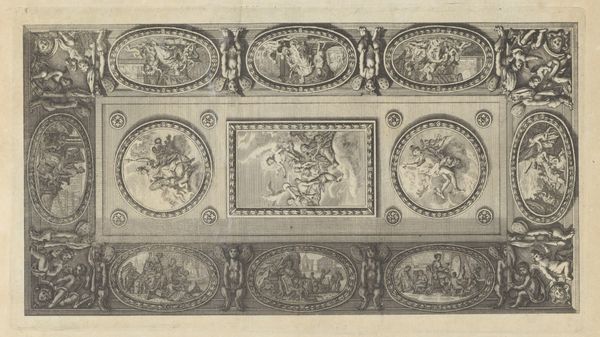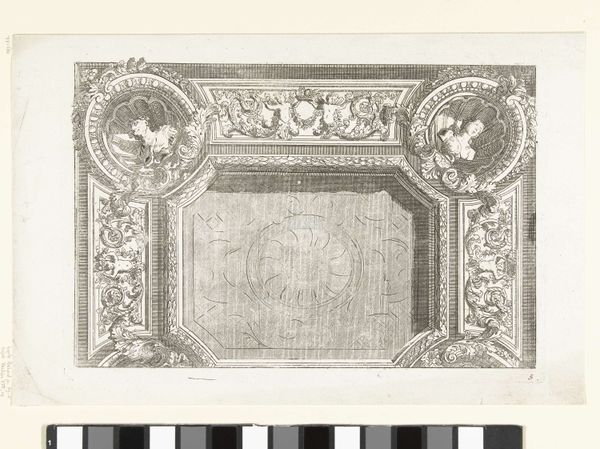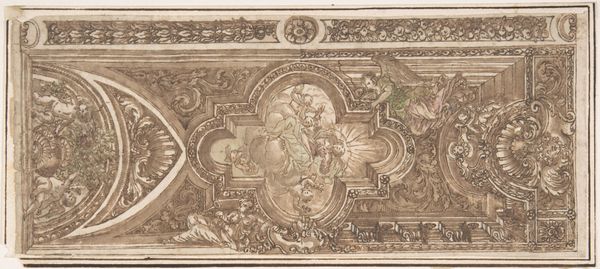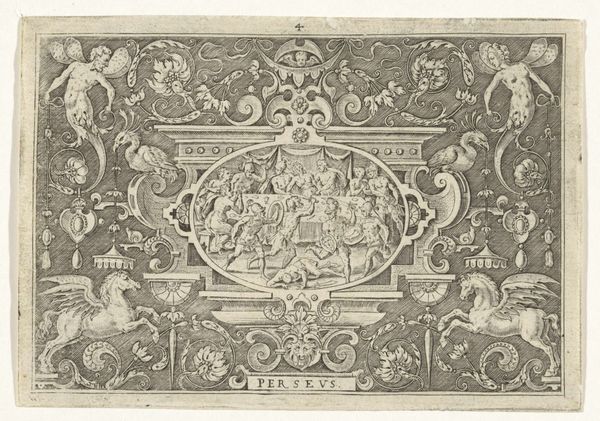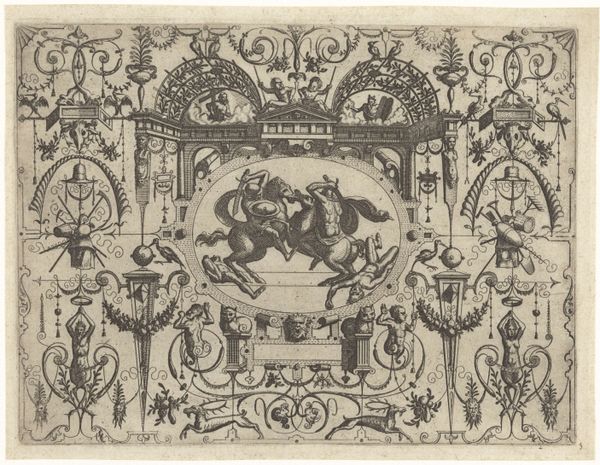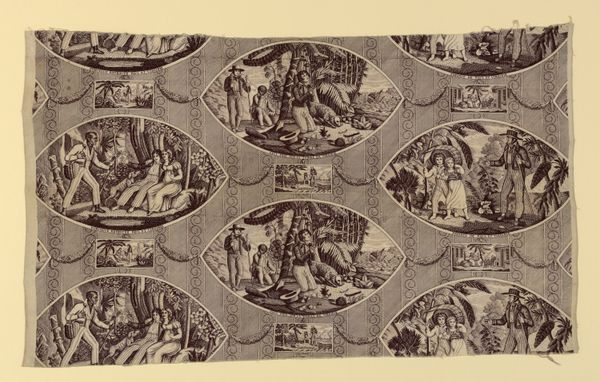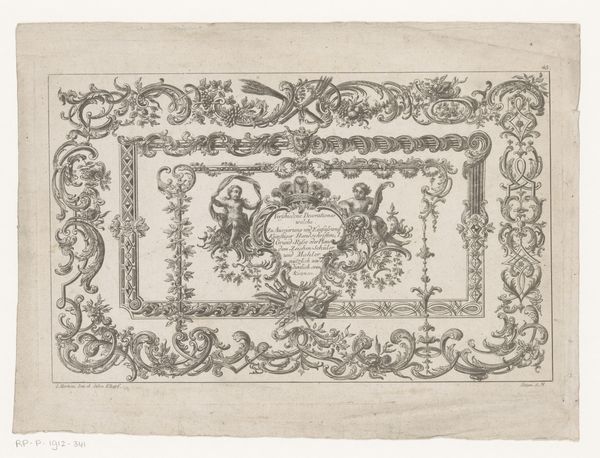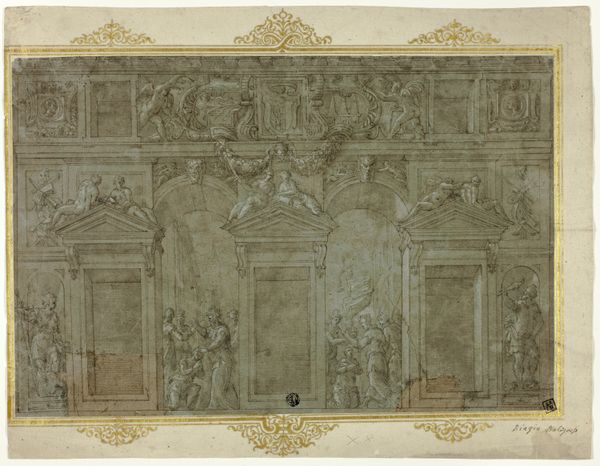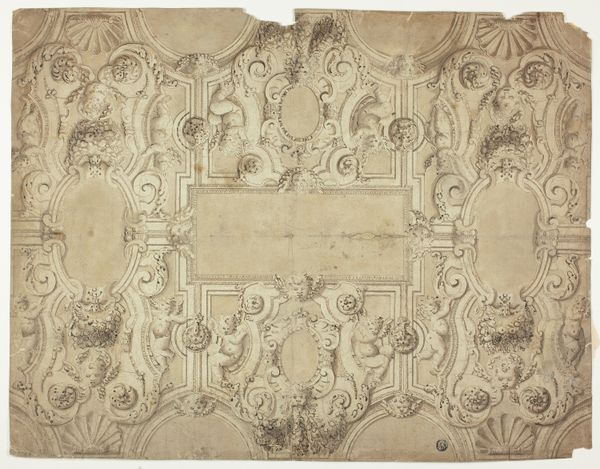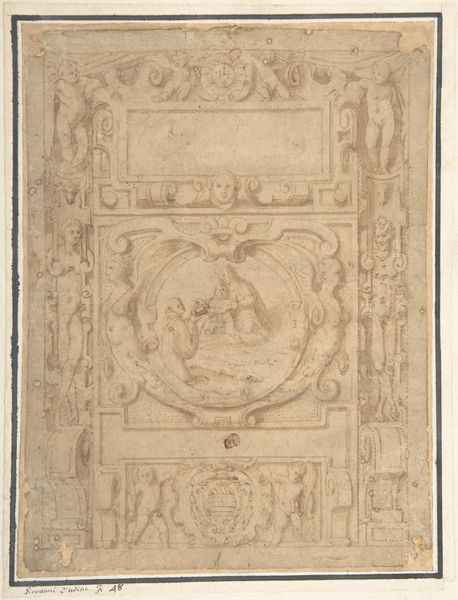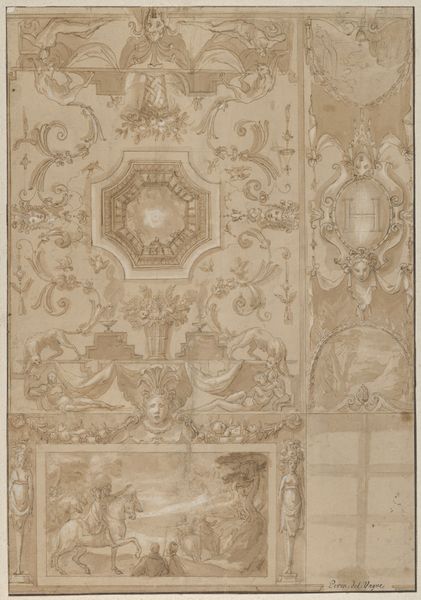
fresco, mural
#
narrative-art
#
figuration
#
fresco
#
history-painting
#
academic-art
#
mural
Dimensions: height 64 mm, width 101 mm
Copyright: Rijks Museum: Open Domain
Curator: Let’s turn our gaze upwards. Before us, we see an image of the plafond within the Augsburg Town Hall in Germany. The mural itself was rendered sometime between 1855 and 1885 by Carl Jochaff, using the fresco technique. Editor: My immediate impression is one of calculated grandeur. There is an overtness to the fresco; this feels incredibly performative and declarative, in scale and composition. Curator: Indeed, let's consider the historical moment in which this was conceived. Mid-19th century, academic art was in full swing, which means Jochaff and the workshop assistants involved—let's not forget their labor in this creation—were likely concerned with the weight of historical narrative, specifically through figuration. We must also acknowledge the physical location of this fresco - a municipal building where collective power literally looms. Editor: Absolutely. The iconographic program screams civic pride, but with a consciously classicizing spin. Note how each circular painting recalls the poses of gods, heroes and emperors—rhetoric about power through mythological references, all working in conjunction to emphasize stability, perhaps in the face of social changes. Curator: And speaking to this, consider how the repetitive design, these circular framed paintings against such geometric borders, speak to industry, the rise of mechanized reproducibility, and maybe also a bit to the individual's relationship to the state... or, maybe, to the state's desire to be associated with something almost machine-made. This wasn’t produced in a vacuum! Fresco-making itself would've involved the specific labor practices and distribution of responsibilities. Editor: What fascinates me is the circular forms—they function as lenses. Look at how our eye is drawn to decode those figural scenes, reading them almost like a series of emblems. The central panel of gathered figures certainly is about the collective ideal that resonates still. Curator: And from a material perspective, imagine preparing the surface, mixing pigments... the sheer amount of material processing! The value is inherent not only in the result but also within the processes involved. Editor: Agreed, by considering both of our perspectives we’ve not only unpacked an image, but perhaps even offered entry point for reconsidering of how a mural becomes an essential piece of political imagination. Curator: Precisely! It speaks to our constant interaction with imagery and our tendency to infuse physical structures, even in mural forms, with labor narratives, be it subtle or declarative.
Comments
No comments
Be the first to comment and join the conversation on the ultimate creative platform.
